In 2022, Bandai started a series of miniatures in their Diversity of Life of Earth line. The first set is the one we will be looking at today, Mini Insects Volume 1. It would be followed by Volumes 2 (which has already been reviewed by Fembrogon) and 3 (which I plan to tackle later), both released in 2023. The Mini subline also includes sets of sharks (2), ancient fish (2), deep sea fish, crustaceans, whales, turtles, and amphibians (2). In addition to the complete sets of Insects Vol. 2, Sharks Vol. 1, and Crustaceans, individual figures from several of these collections are peppered throughout our Blog. This first set of insects consists of six figures representing four species of scarabaeoid beetles, all species which have been commonly made throughout the years by Japanese companies. Like their larger counterparts in the Diversity line, assembly is required, but it is simpler and easier (the beetles of Volumes 1 and 3 assemble much easier than the orthopteroids of Volume 2).
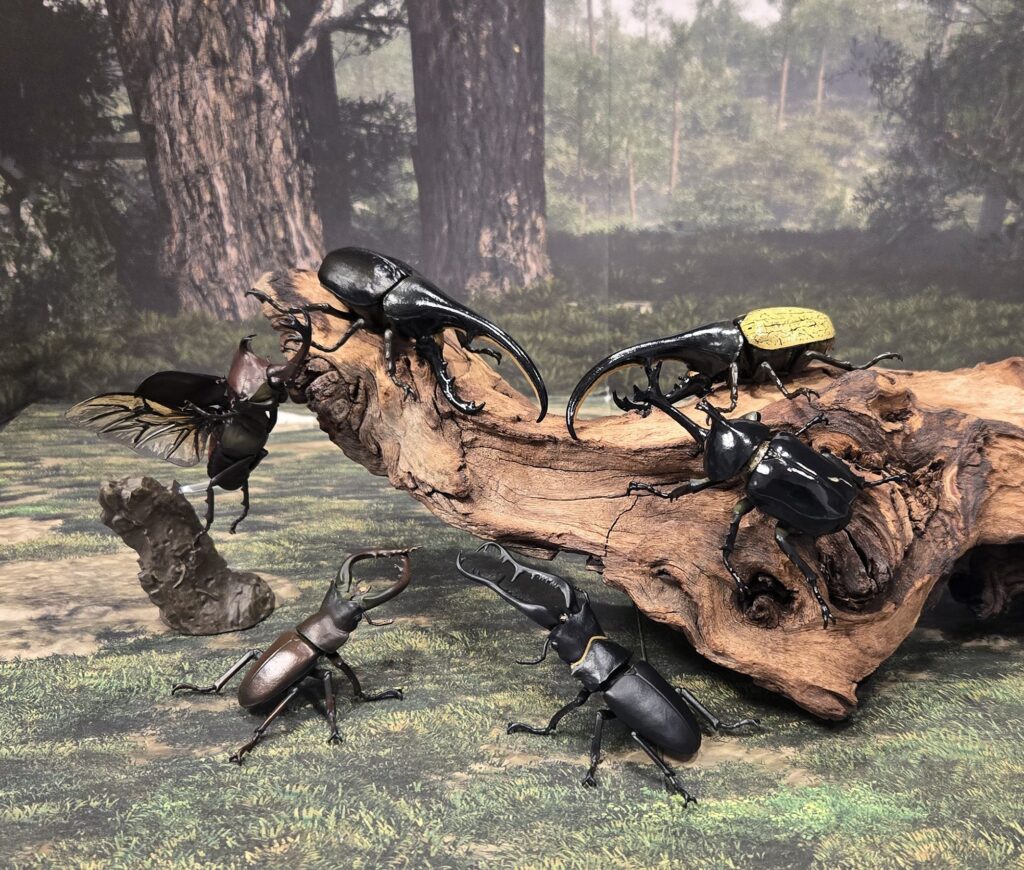
For starters, lets look at the Japanese rhinoceros beetle, Allomyrina dichotoma, which is native to East Asia and Japan. No set of beetles (or set of insects that includes beetles) out of Japan would be complete without A. dichotoma. It is without doubt the most commonly made species of insect, and nearly every well-known Japanese company has produced the species multiple times (it’s been made at least seven times just for this Diversity line) and even by some western companies, such as CollectA (twice) and K&M International. There are two examples of the species in today’s set, one flying and one in a neutral pose. Both figures measure approximately 6.3 cm (including the cephalic horn), which puts them in scale 1:1. The neutral beetle is painted black while the flying one is brown. And while assembly of the beetles themselves was easy, getting the flying rhino beetle to attach to its tree stump base was challenging. The figure is also a little front-heavy, and so I have a couple of dimes on the back of the base to help keep it stable.
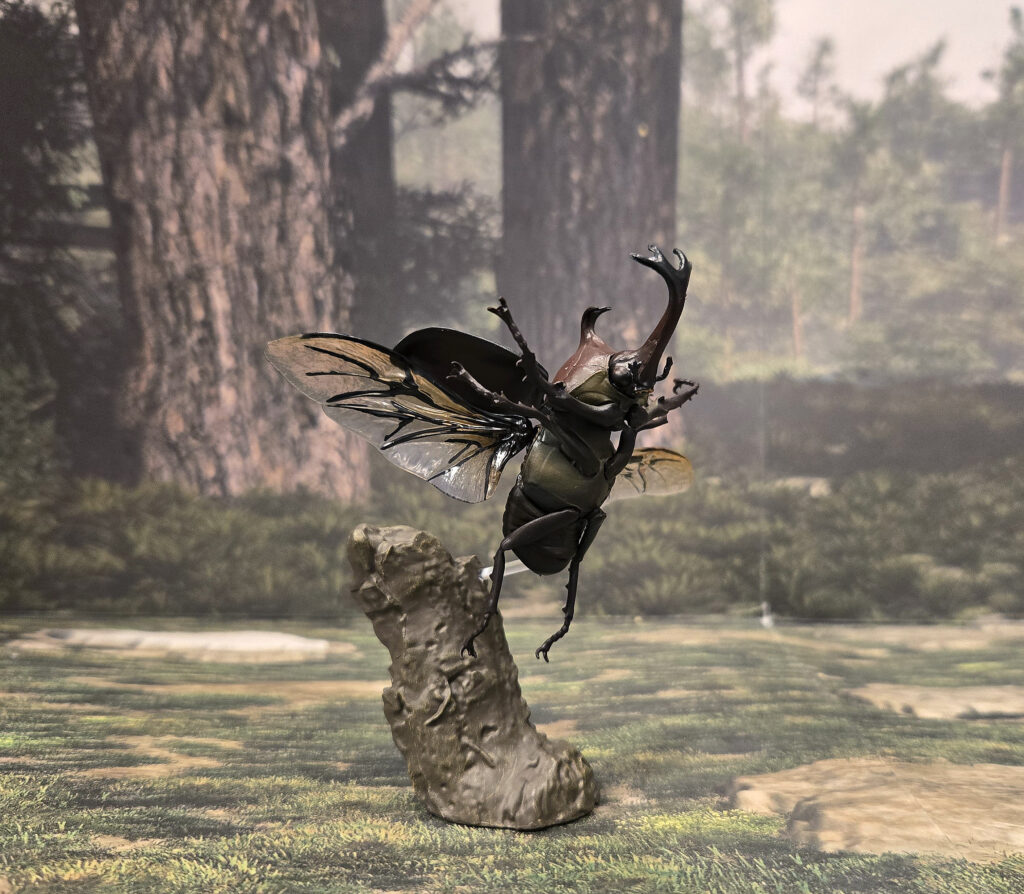
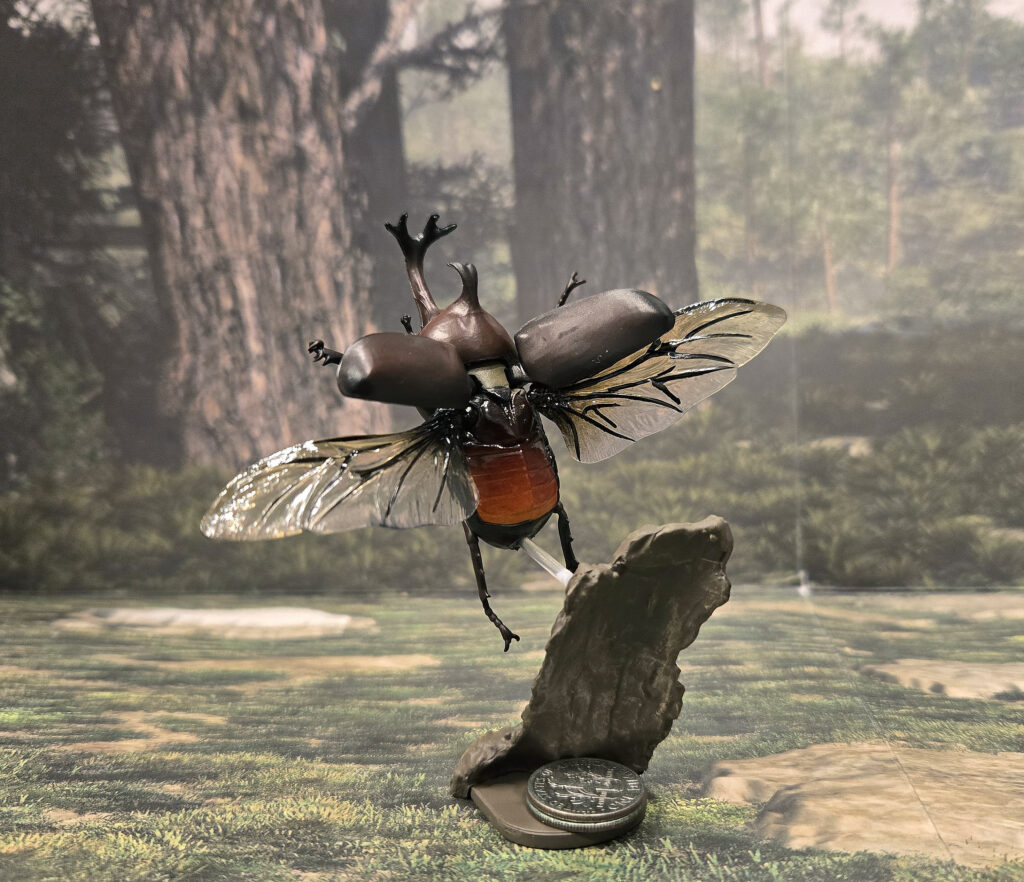
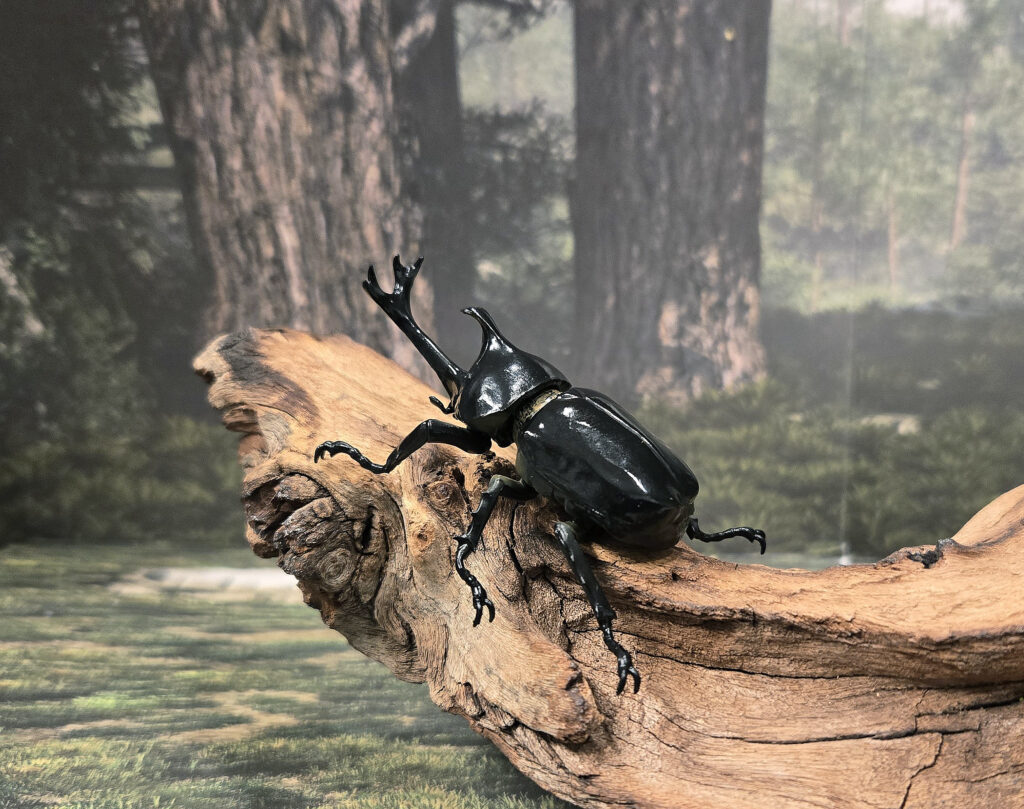
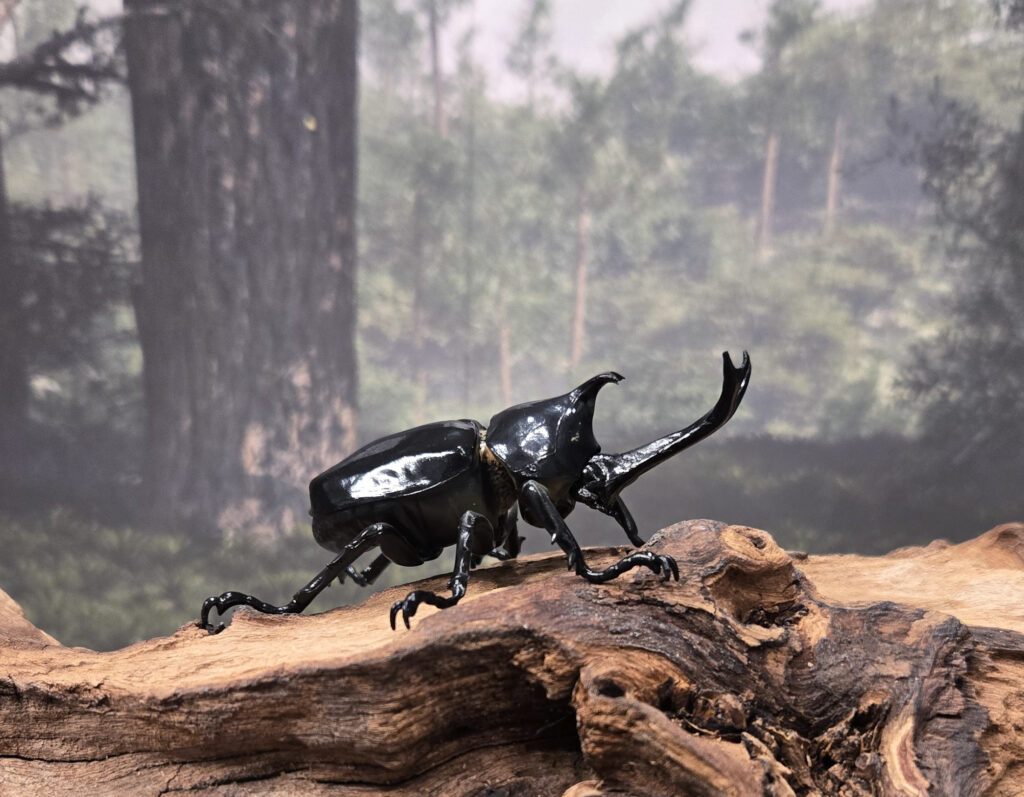
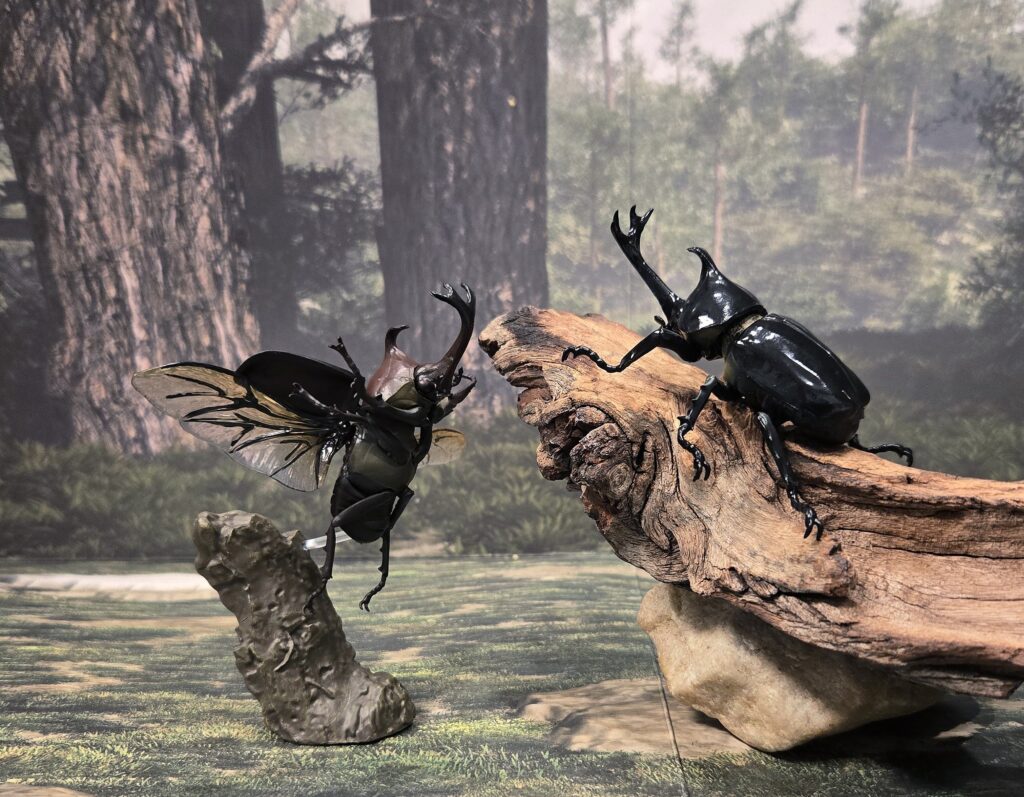
The next two figures we will be looking at represent the Hercules beetle, Dynastes hercules, which is native to Central and South America and the Caribbean. If A. dichotoma is the most commonly made species of insect, D. hercules is undoubtedly a close number 2! These two figures represent the same sculpt, with one painted as the traditional yellow with black maculae and the other black. From what I can tell, the black morphotype is not specific to a given subspecies or population, but rather occurs in areas of high humidity. The figures are approximately 9.0 cm long (including the pronotal horn) which put them at a scale of 1:2 for large, major males (which they clearly represent).
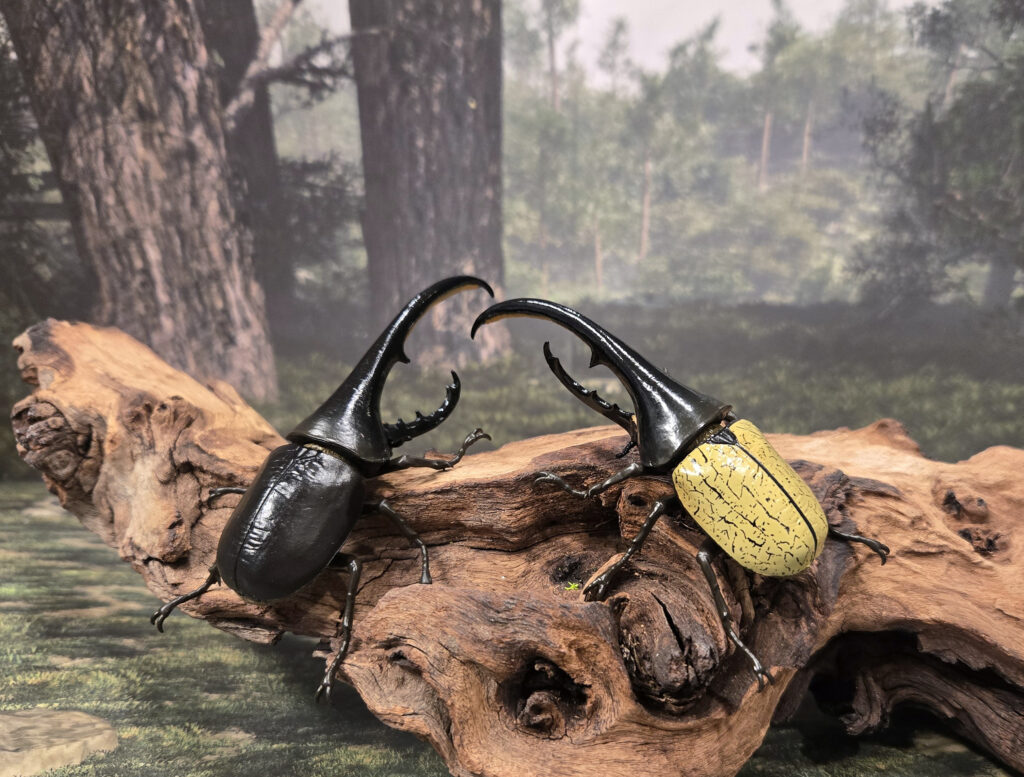
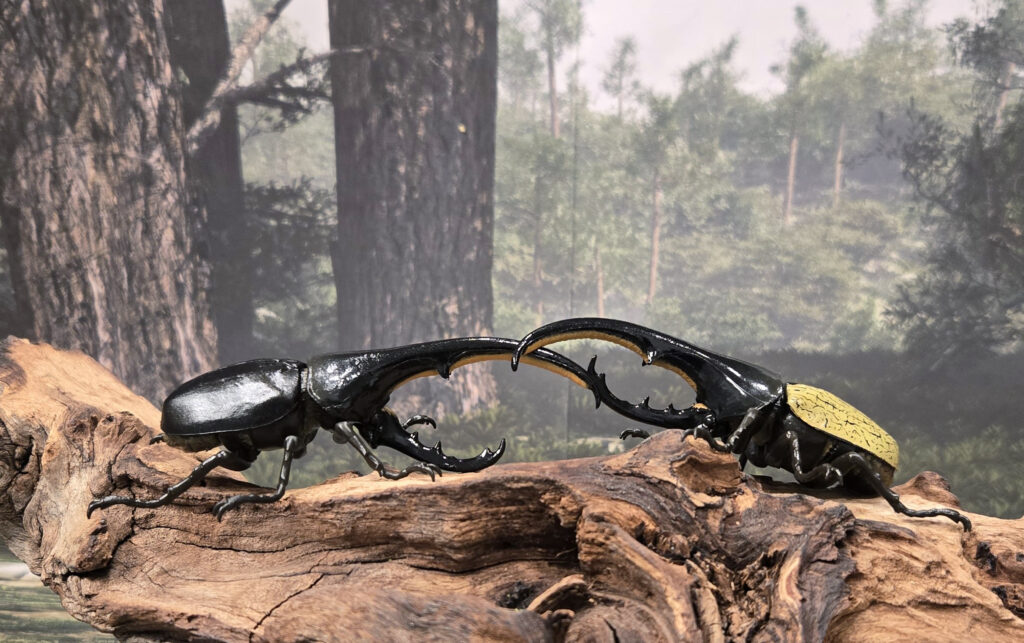
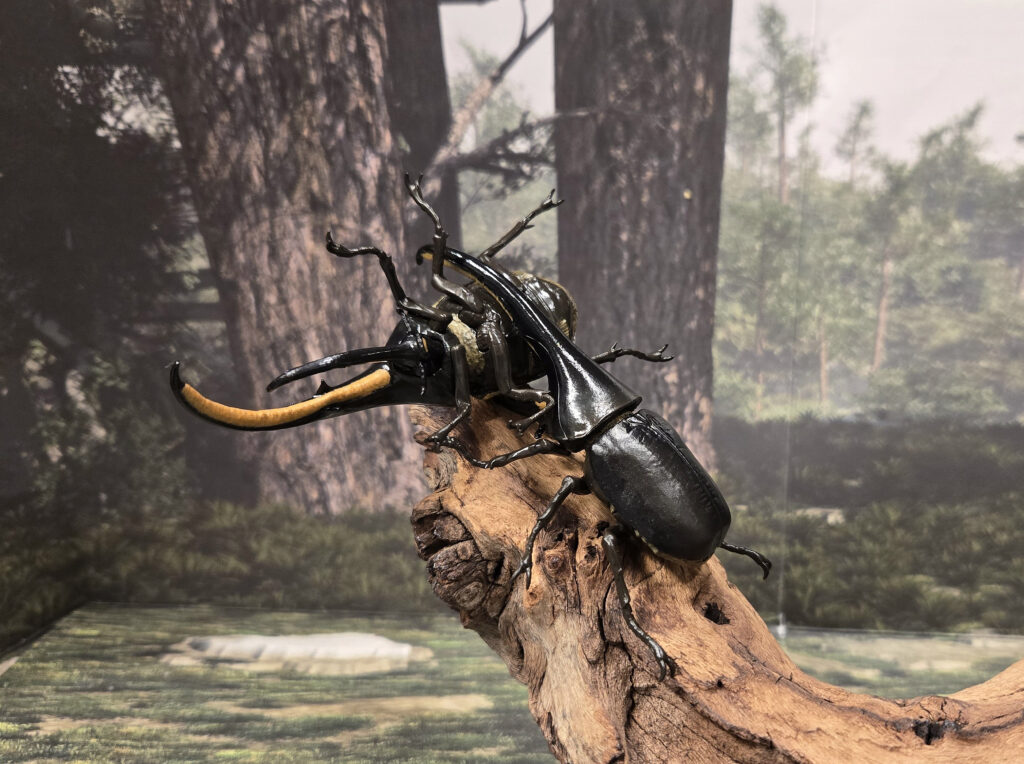
The last two figures represent members of the genus Prosopocoilus. The first one we will be looking at is the giraffe stag beetle, P. giraffa. The largest member of its genus at up to 12.3 cm, the species occurs throughout forested regions of much of Central and Southeast Asia, from India to Indonesia. The figure is sculpted in a neutral pose (although Volume 3 will feature a flying one that mirror’s this set’s flying A. dichotoma). It measures approximately 8.0 cm for a maximum scale of 1:1.5.
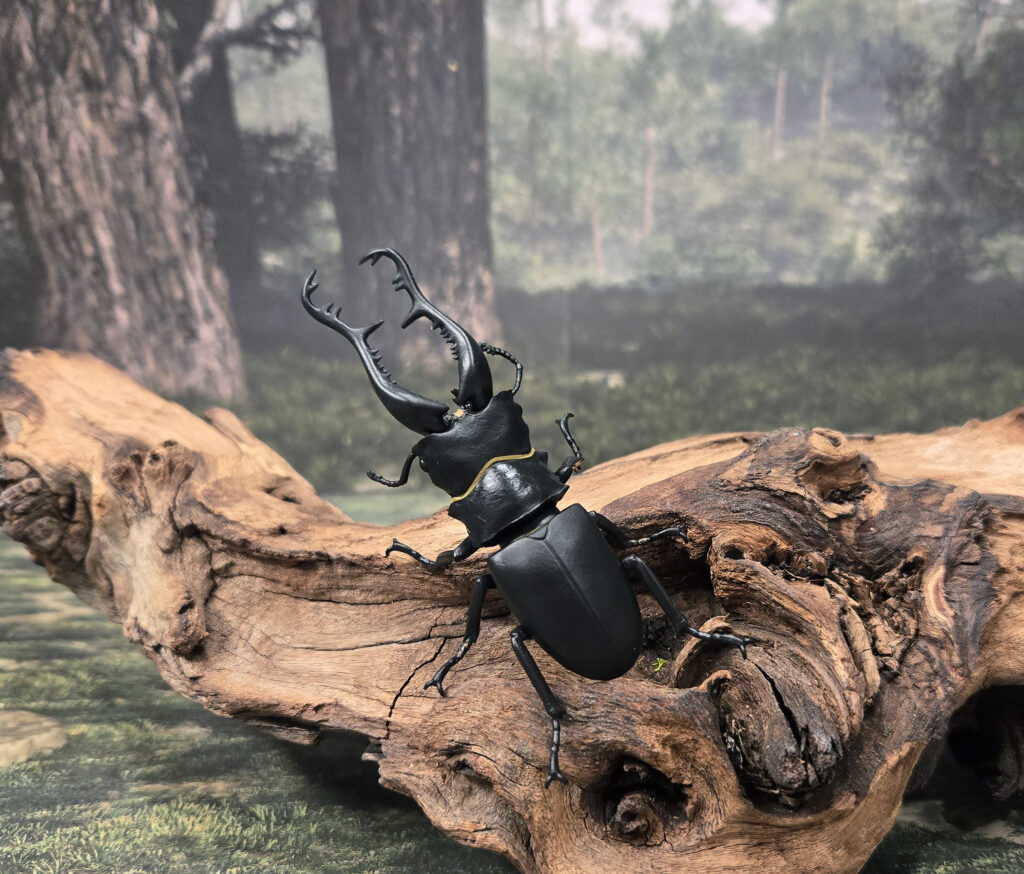
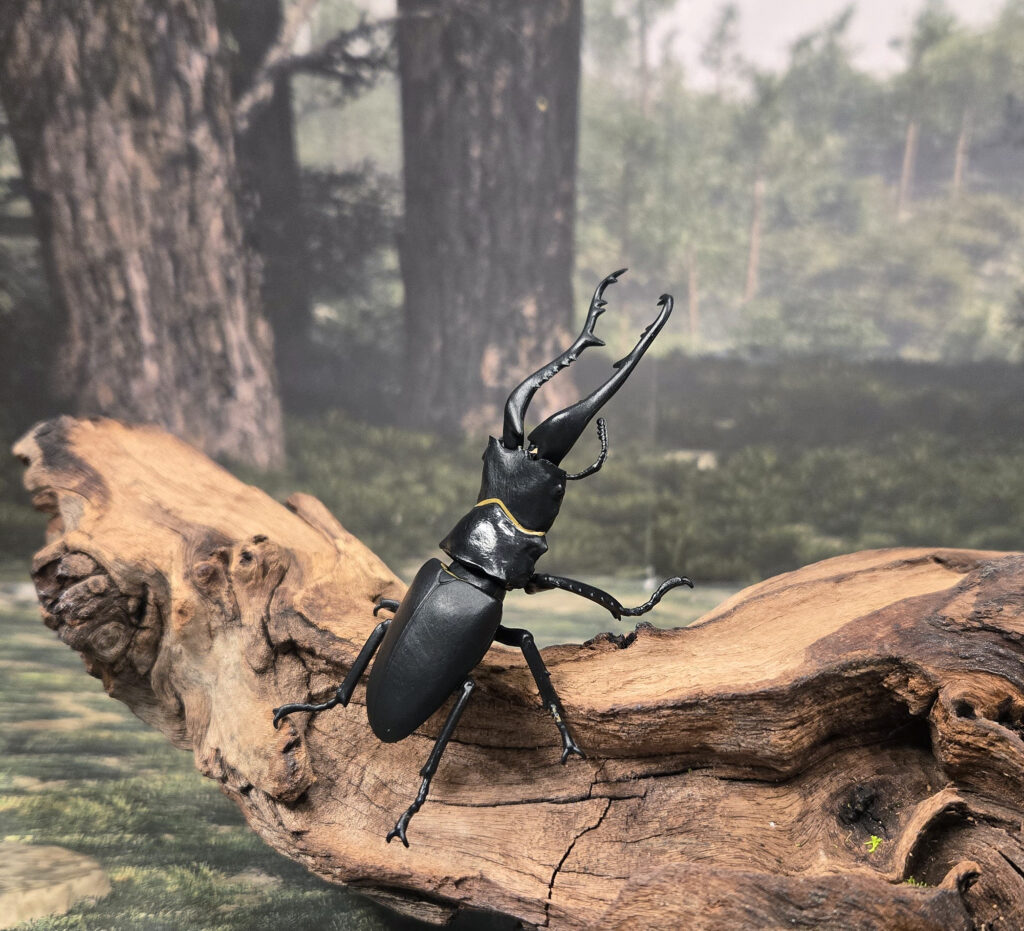
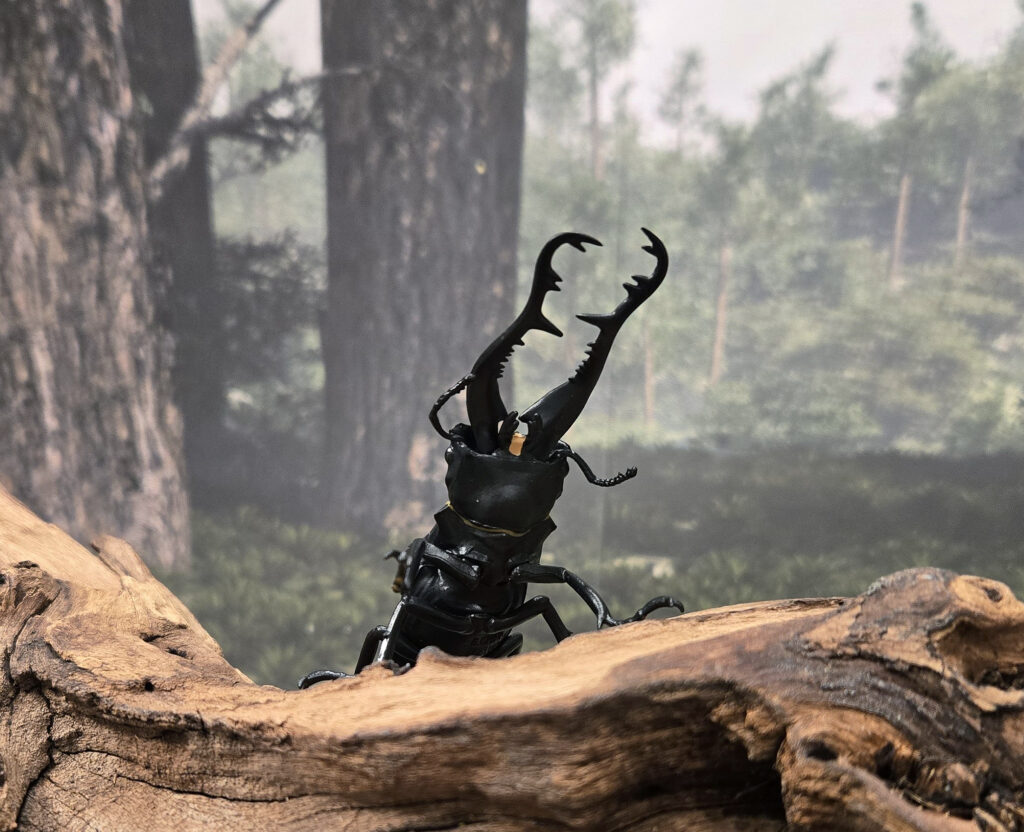
The last figure is the other species of Prosopocoilus, P. inclinatus, commonly referred to as the Japanese stag beetle or saw-toothed stag beetle (although a couple species of Prosopocoilus share the latter common name). The species occurs in East Asia, including Japan, Taiwan, the Korean Peninsula, and eastern China. They breed in rotting Quercus (oak) logs. The figure measures approximately 6.0 cm (including the mandibles), putting it within scale 1:1 for a major male. Unfortunately there is some warping of the mandibles during packaging and shipping. It is painted brown with darker infuscations, especially along joints.
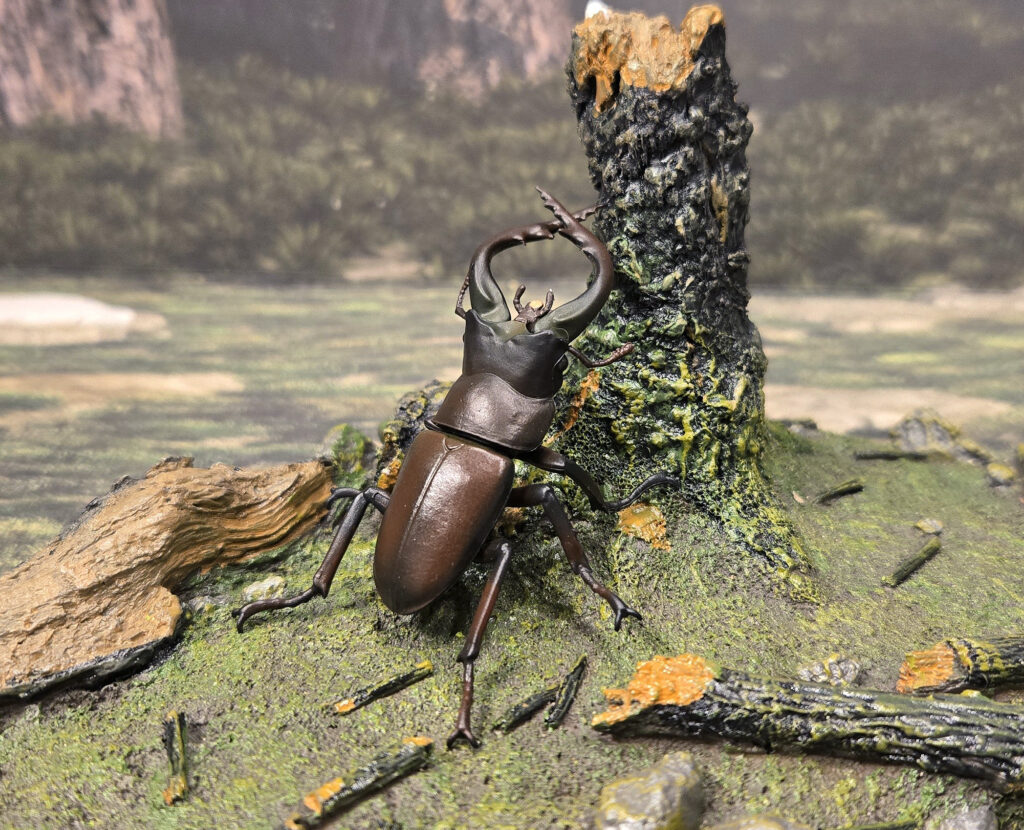
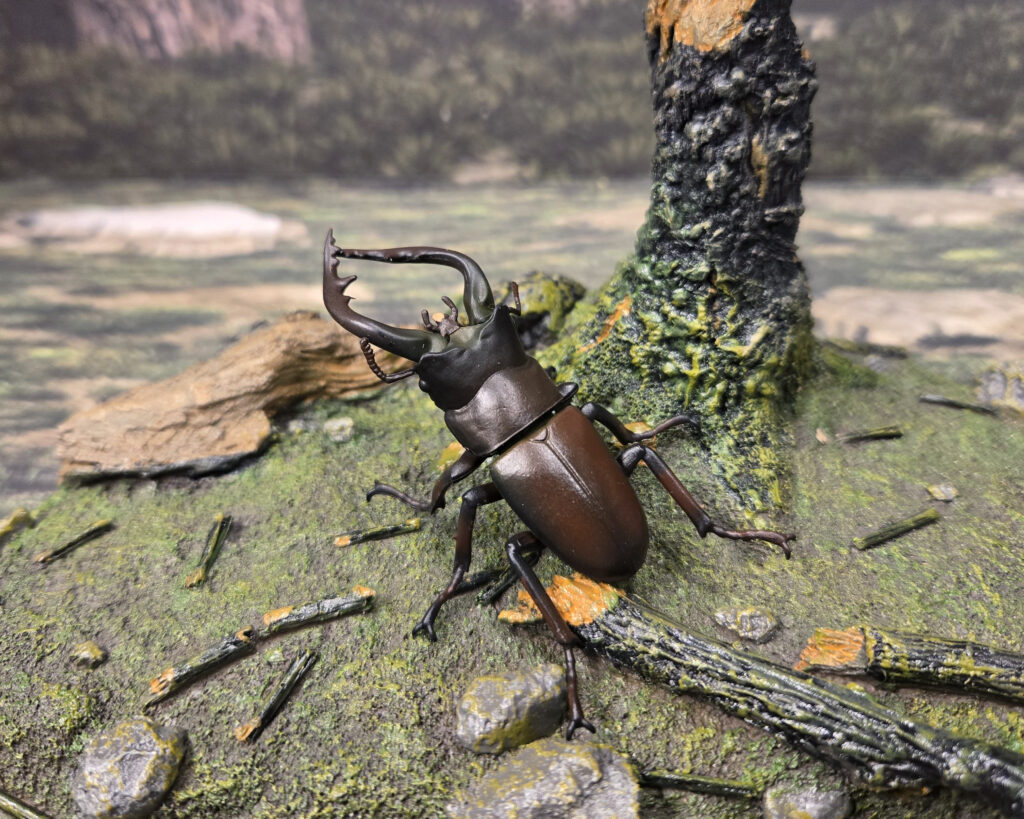
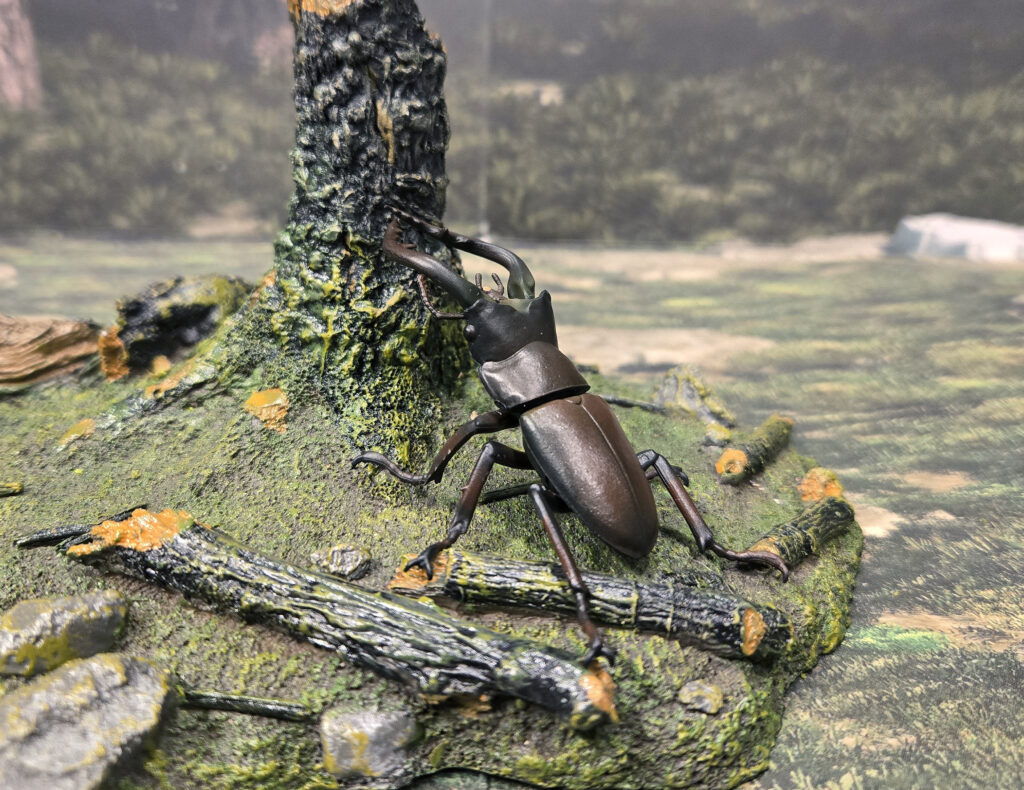
This is a really nice set but it probably caters most to completists. There are numerous examples of all these species available (although these are some of the nicest exemplars of their respective species I own). The Bandai ‘Mini’ subline allows for a diverse assortment of species in a smaller size and at a cheaper price point. They still require some assembly (although not as much as their larger counterparts) and are not articulated.
Disclaimer: links to Ebay and Amazon on the AnimalToyBlog are affiliate links, so we make a small commission if you use them. Thanks for supporting us!



